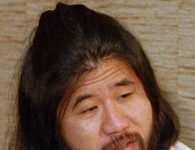On Nov. 9, 1938, Nazi storm troopers launched a coordinated attack against Jewish communities, destroying property and shipping thousands to concentration camps.
“Night of Broken Glass”
Kristallnacht, literally “Night of Crystal” but often referred to as “Night of Broken Glass,” was sparked by the Nov. 7, 1938, assassination of German diplomat Ernst vom Rath in Paris by Jewish teenager Herschel Grynszpan. Vom Rath died two days later, the same day that Nazi leaders were gathering in Munich to commemorate the fifth anniversary of the Beer Hall Putsch. Joseph Goebbels, the Nazi minister of propaganda, gave a speech calling for a coordinated strike to be made against the Jews in retaliation for the assassination.
That night, SS head Reinhard Heydrich issued a memo to state police departments stating that “demonstrations against the Jews are to be expected in all parts of the Reich in the course of the coming night.”
It gave specific instructions: Jewish businesses and homes were to “be destroyed but not looted” and non-Jewish property was to be protected. As an example, Heydrich instructed that “synagogues are to be burned down only where there is no danger of fire in neighboring buildings.” The memo also called for healthy Jewish men to be detained in prisons or concentration camps, though it did specify that “Special care is to be taken that the Jews arrested … are not ill-treated.”
Overnight, across the Third Reich, Nazi storm troopers and Hitler Youth members, most dressed in civilian clothes to hide their affiliation, rioted against Jews living in Germany, Austria and the Sudetenland region of Czechoslovakia.
Synagogues were ransacked, Jewish cemeteries were desecrated, and the windows of an estimated 7,500 Jewish-owned stores were broken, creating a blanket of glass in the streets. German police did nothing to stop the riots.
At least 91 Jews were murdered by rioters, while there were also high numbers of rapes and suicides. An estimated 25-30,000 Jewish men were taken to concentration camps, the first widespread detainment of Jews under Nazi rule.
Witness Accounts
Anti-Semitic Measures Following Kristallnacht
Over the following weeks and months, the Nazi government passed laws that gradually removed Jews from society. Jewish business were confiscated and given to non-Jews, and the government established the Central Office for Jewish Emigration to support Jewish emigration.
“The events of Kristallnacht represented one of the most important turning points in National Socialist antisemitic policy,” writes the United States Holocaust Memorial Museum. “The Nazi regime expanded and radicalized measures aimed at removing Jews entirely from German economic and social life in the forthcoming years, moving eventually towards policies of forced emigration, and finally towards the realization of a Germany ‘free of Jews’” (judenrein) by deportation of the Jewish population ‘to the East.’”











